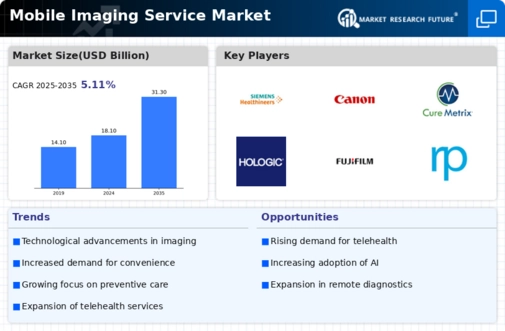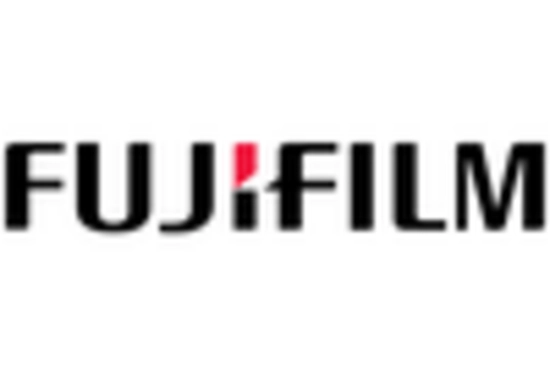Rising Prevalence of Chronic Diseases
The Mobile Imaging Service Market is significantly influenced by the rising prevalence of chronic diseases, such as cardiovascular disorders and diabetes. As these conditions become more common, the demand for timely and accurate diagnostic imaging services increases. Mobile imaging services provide a convenient solution for patients who may have difficulty accessing traditional healthcare facilities. According to recent statistics, nearly 60% of adults in certain regions are living with at least one chronic condition, which underscores the necessity for mobile imaging solutions. This trend is likely to propel the market forward as healthcare providers seek to meet the growing demand for accessible imaging services.
Cost-Effectiveness of Mobile Imaging Services
The Mobile Imaging Service Market benefits from the cost-effectiveness of mobile imaging services compared to traditional imaging facilities. By reducing overhead costs associated with maintaining physical locations, mobile services can offer competitive pricing to patients and healthcare providers. This affordability is particularly appealing to underserved populations and rural areas where access to imaging services may be limited. Recent analyses indicate that mobile imaging can reduce costs by up to 30% compared to conventional imaging centers. As healthcare systems increasingly prioritize cost containment, the demand for mobile imaging services is likely to rise, further driving market growth.
Technological Innovations in Imaging Equipment
The Mobile Imaging Service Market is experiencing a surge in technological innovations, particularly in imaging equipment. Advancements in portable imaging technologies, such as high-resolution ultrasound and digital X-ray systems, are enhancing diagnostic capabilities. These innovations not only improve image quality but also reduce the time required for imaging procedures. The integration of artificial intelligence in image analysis is further streamlining workflows, allowing for quicker diagnoses. As a result, the market is projected to grow at a compound annual growth rate of approximately 8% over the next five years, driven by the increasing adoption of these advanced technologies.
Aging Population and Increased Healthcare Needs
The Mobile Imaging Service Market is also driven by the aging population, which is leading to increased healthcare needs. As individuals age, they often require more frequent medical evaluations, including imaging services. The World Health Organization projects that the number of people aged 60 and older will double by 2050, reaching over 2 billion. This demographic shift is creating a substantial demand for mobile imaging services, as they offer flexibility and convenience for elderly patients who may have mobility challenges. Consequently, the market is expected to expand as healthcare systems adapt to cater to this growing segment of the population.
Integration with Preventive Healthcare Initiatives
The Mobile Imaging Service Market is increasingly aligning with preventive healthcare initiatives aimed at early detection and management of diseases. As healthcare systems shift focus from reactive to proactive care, mobile imaging services play a crucial role in facilitating regular screenings and check-ups. This integration not only enhances patient outcomes but also reduces long-term healthcare costs. Recent studies suggest that early detection through mobile imaging can decrease the incidence of advanced disease stages by up to 40%. As awareness of preventive care grows, the demand for mobile imaging services is expected to increase, positioning the market for substantial growth in the coming years.

















Leave a Comment